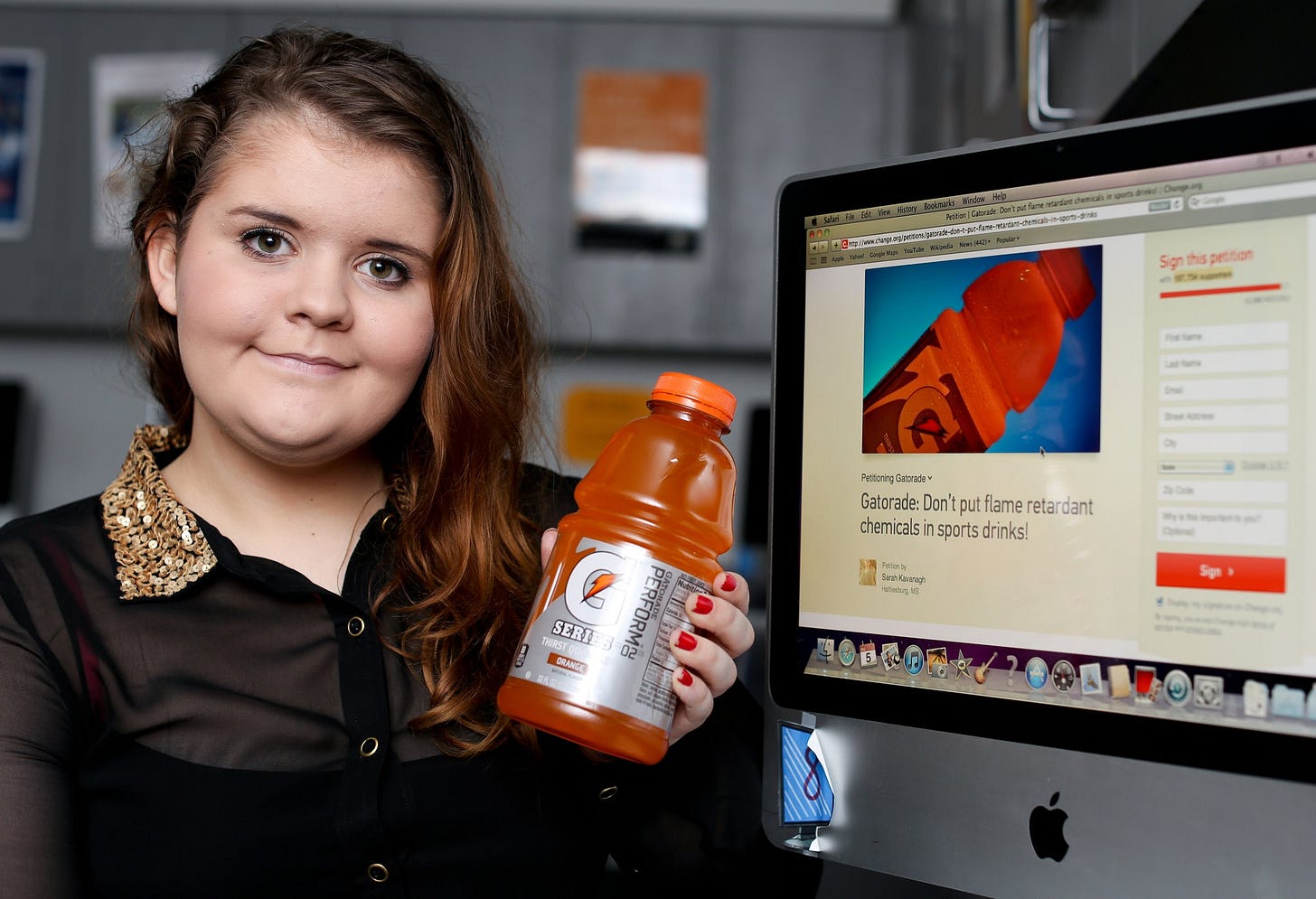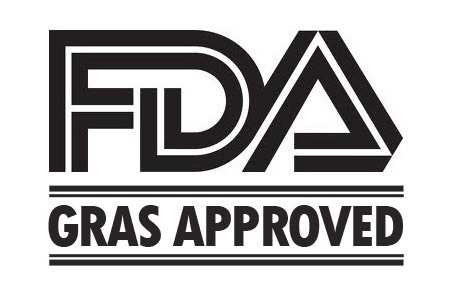By Sina McCullough, PhD, Special to The MAHA Report
A legislative loophole has allowed thousands of chemicals to enter our food supply without safety testing or monitoring by the Food and Drug Administration (FDA). This loophole, known as GRAS, or “Generally Recognized as Safe,” has transformed our food into a nationwide chemical experiment where consumers are the guinea pigs.
How did this happen?
Statistics tell part of the story. Roughly 57 percent of the average American calorie intake now comes from ultra-processed foods. Many of these products contain synthetic chemicals that were never subjected to rigorous safety testing by the FDA.
Nearly 99 percent of food chemicals introduced since 2000 were approved by the food and chemical industries themselves, according to an Environmental Working Group analysis.
These chemicals are not hiding in obscure products; they show up in everyday favorites.
Boar’s Head Pepperoni, for example, contains butylated hydroxyanisole (BHA), labeled by the National Institutes of Health as “reasonably anticipated to be a human carcinogen.” Pillsbury bread mix contains propylene glycol, a known skin allergen. Doritos contain monosodium glutamate, linked in animal studies to decreased testosterone and sperm count. Entenmann’s Coconut Crunch Donuts contain propylparaben, which animal studies associate with decreased fertility.
A Well-Meaning Law Gone Wrong
In 1958, Congress passed the Food Additives Amendment to ensure chemicals were tested for safety before being added to food. However, it contained an exemption: substances that were “generally recognized as safe” would not require FDA scrutiny.
GRAS was originally intended to exempt common kitchen staples like vinegar and salt. Over time, however, companies used the same pathway to bypass pre-market review for thousands of new, laboratory-designed substances.
Today, our food supply contains an estimated 10,000 chemical additives, many of which slipped through the GRAS loophole. These substances are not tested or monitored by the FDA yet they appear in commonly consumed foods.
How Industry Became Its Own Regulator
It is no accident that household favorites–from chips to doughnuts–contain chemicals even though the FDA may classify them as GRAS.
A 2010 Government Accountability Office (GAO) report revealed that Congress never designated a regulatory body to verify GRAS decisions. In that leadership vacuum, companies began to police their own ingredients.
The FDA formalized industry self-certification when it proposed a GRAS-notice program in 1997 and finalized it in 2016, officially placing the responsibility of determining GRAS status on companies while the agency offers “nonbinding recommendations.”
Legally, companies need an “expert” to declare a chemical GRAS. Who are the “experts?”
A 2014 study in JAMA Internal Medicine concluded that these experts often have financial ties to the companies they advise, raising the possibility of conflicts of interest. According to a 2023 article analyzing 403 GRAS notices filed between 2015 and 2020, seven individuals occupied nearly half of all available expert panel positions.
Once these “experts” give the green light, the chemical can go directly into your food without a waiting period or independent review. Companies are not required to notify the FDA when they add a new chemical to our food—the notification process is voluntary.
Guess who made the notification process voluntary?
The FDA.
Because the process is voluntary, an estimated 1,000 chemicals have been added to our food without the FDA’s knowledge. If the FDA doesn’t know which chemicals are in our food, how can they ensure our food is safe? How can they issue timely recalls or safety alerts if a problem arises?
The FDA knows about the GRAS loophole. Industry knows. The GAO knows. Everyone seems to know except us – the American people.
The Chemical‐Cocktail Question
An occasional donut or bag of chips is unlikely to cause immediate harm. The real concern is long-term, cumulative exposure to complex mixtures of chemicals.
Regulators and researchers typically analyze the short-term health effects of chemicals one by one, but we ingest them buffet-style–sometimes for decades.
The first large population-based cohort study to address this gap was published in 2024. Over 100,000 French adults were tracked for over seven years.
Two real-world mixtures of common additives—primarily emulsifiers, preservatives, and a dye in one blend, artificial sweeteners, emulsifiers, and acid regulators in another—were linked to an 8 to 12 percent higher risk of type 2 diabetes for each standard-deviation jump in exposure.
The authors warned of possible synergistic toxicity and urged regulators to test additives the way humans consume them: together.
Until science and policy catch up to how we actually eat, the long-term and combined effects of GRAS chemicals will remain largely unknown.
That uncertainty—highlighted by new research and steady pressure from watchdogs and consumers—has put fresh scrutiny on the GRAS framework in Washington.
What is Changing at the Federal Level?
Under Health and Human Services Secretary Robert F. Kennedy Jr., the FDA announced in March 2025 that it is exploring possible rulemaking to end self-affirmed GRAS determinations and require companies to submit every safety dossier to the agency before an ingredient reaches the market.
As part of the same initiative, the FDA plans to launch a post-market review program to re-examine legacy additives, assess cumulative dietary exposure, and publish all review documents in a publicly searchable docket.
Kennedy has scrutinized several GRAS chemicals, including high fructose corn syrup, highly refined seed oils, BHA, and BHT. Many are optimistic that he will take a bold stand against this loophole. However, because the self-certification is enshrined in the Federal Food, Drug, and Cosmetic Act, Congress must amend the statute to fully close the loophole.
States Step In
Some states have begun targeting GRAS-listed preservatives directly.
California’s Food Safety Act bans propyl paraben statewide effective 2027.
New York’s pending A6424A/S6055B bill would bar both propyl paraben and BHA statewide.
Similar measures now moving through Michigan’s House (H.B. 4369) would also prohibit propyl paraben and BHA in school meals.
Still, legislation is only one lever. The everyday choices shoppers make can also nudge companies toward safer ingredients.
The Power of One
Brominated vegetable oil (BVO) was placed on the original GRAS list in the 1950s. After Mississippi teenager Sarah Kavanagh launched a petition in 2012, Gatorade and Powerade removed BVO from their sports drinks, proving that one person can spark change.
The FDA followed suit in 2024, banning BVO–after over 100 years of use in our food supply–based on studies concluding it may harm the thyroid gland. Companies have until August 2 to reformulate, so check your food labels. BVO may still be found in over 600 products, according to the United States Department of Agriculture.
BVO underscores both the power of consumer pressure and the glacial pace of regulatory reform. Relying on rigorous scientific studies to vet the long-term effects of every GRAS chemical—and every possible combination—means playing the long game. The 2024 French study, for example, tracked adults for seven years and only evaluated five blends of common additives; thousands of other chemical cocktails have yet to be examined.
Meanwhile, consumers are continually exposed to an evolving mix of ingredients: even as one substance may be banned or removed from the GRAS list, new formulations enter the marketplace.
What You Can Do Now

Sarah Kavanagh stood up to a food giant—and won. We can move the market too.
To avoid eating GRAS chemicals, check but don’t rely solely on FDA’s GRAS database to determine if an ingredient in your food falls under this category.
The online database only lists chemicals that companies have voluntarily reported to the FDA since 1998. Because federal law still lets firms self-certify an ingredient as GRAS without telling the agency, the inventory is not a complete catalogue of every GRAS chemical on the market.
Use the database as a starting point, then apply a simple rule of thumb: if an ingredient name is unfamiliar, unpronounceable, or something you wouldn’t cook with at home, don’t eat it.
While this method won’t eliminate all GRAS chemicals and may exclude some that aren’t GRAS, it’s an easy rule of thumb.
Change may be coming from Washington and from state capitals, but the most immediate leverage still lies in your hands – one ingredient at a time, at the checkout line.
Sina McCullough earned a Ph.D. in Nutrition and a B.S. in Neurobiology, Physiology, and Behavior from the University of California, Davis, where she also taught Biochemistry and Bioenergetics. She is a certified Master Herbalist, Natural Healer™ and Gluten Free Society Practitioner; author of Hands Off My Food and Beyond Labels; and co-host of the Beyond Labels podcast alongside Joel Salatin.









I can stop holding my breath, I think! I've been in this fight since the early nineties and it's been exhausting. We tried in CT to get a labeling law and we did but they put so many roadblocks in our way because the Grocery Manufacturing Association and Monsanto would sue the state that it finally wasn't enabled. Vermont came in and got the law, passed it, and then were sued... but they won. Then Debbie Stabinow came in and preempted the states with Federal legislation that stopped anyone from getting proper labels. She probably got a large chunk of money to do that. I'm now hopeful for once in a very long time. I hope to see this happen because I have watched our health system disintegrate with all the health issues. I am 81 this month so hoping this will happen soon so I can yell, Hoorah!
Finally, my tax dollars are going to something I support 100%! I believe that just as Bill Wilson was the country's greatest influential visionary of the 20th century, RFK Jr will be that of the 21st.